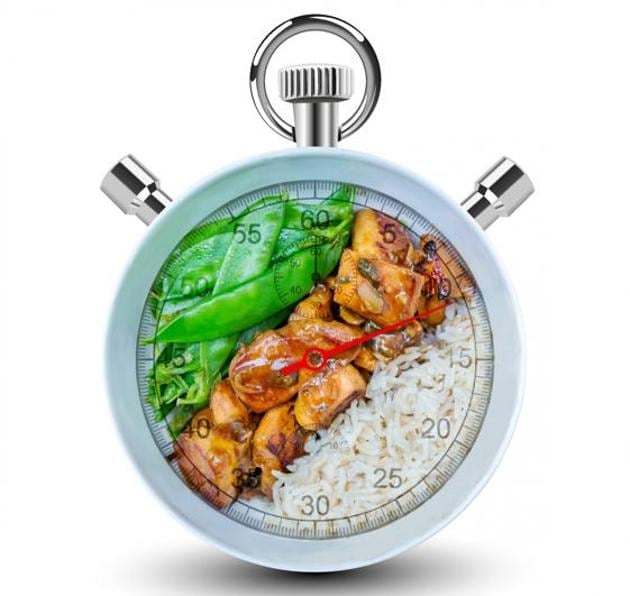How quick food recipe videos captured India’s imagination
A surfeit of food recipe videos on fast forward captured the imagination of a generation with attention deficit
A video by Gobble (by Pocket Aces, a digital entertainment firm, 335K likes on Facebook) teaches you how to make Ghee Chicken Roast. The video is shot from the top, there are subtitled instructions, and there’s upbeat music to go with it. Spices are roasted in a pan, chicken is marinated, and it’s then cooked in ghee. A quick stir later, the dish is ready. While the actual process takes over an hour, the video is under a minute long. It’s hard to tell how many people tried cooking the dish. But, evidently, a lot of people saw the video (471k views).

Gobble is one of many social media pages that feature quick food videos. More than a dozen such Indian food channels and dedicated Facebook pages have cropped up in recent times. They are either run by amateur food bloggers, or owned by new-age media companies.
It includes Om Nom Nom (by digital company Scoopwhoop; 755K FB likes), Awesome Sauce (by digital company Culture Machine, 1 million FB likes), Cooktube (170K FB likes) and Your Food Lab (858K FB likes; started by Sanjyot Keer, a former MasterChef India producer), among others. The various regions of India also get represented through channels like Hebbar’s Kitchen (3.3 million FB likes; Kannada), Ruchkar Mejwani (4.98K FB likes; Maharashtrian) and Banglar Rannaghor (289K FB likes; Bengali).
Read: Going against the grain: Why Mumbai’s eateries are turning gluten-free
These pages are able to compete with content generated by established chefs and food brands. For instance, in December 2016, video analytics platform Vidooly showed how quick food video pages like Hebbar’s Kitchen and Om Nom Nom rank higher than pages by chef Sanjeev Kapoor and India Food Network.
It helps that quick food videos are perfect for short attention spans (cooking shows require minimum viewership of half an hour to an hour) and can be consumed on the go. They are, in effect, a version of instant gratification/food porn hitherto associated with cooking shows, or viewing photos of food on Instagram.
When global becomes local
As with many trends that trickle to India, quick food videos, too, started as an international phenomena. BuzzFeed’s Facebook-only cooking channel, Tasty, was one of the pioneers. In 2014, the BuzzFeed Food team was experimenting to see which videos go viral on Facebook and found that food videos were doing well. In 2015, Facebook altered its algorithm to promote videos that users liked or shared. Buzzfeed launched Tasty the same year with quick recipe videos, and it was a runaway success. In 2016, they were Buzzfeed’s most popular page on Facebook.
In India, quick food videos first started in 2015. Channels like Cooktube, Awesome Sauce, Subbu’s Kitchen and Ayesha’s Kitchen were some of the early creators on the scene. Tasty’s success inspired many of them. “Quick food videos had become popular globally. They were easy on the eye and made cooking look easy. We got into creation of these videos as it reaches out to people at a faster pace,” says Lopa Mudra Mitra, channel director, Culture Machine (which runs Awesome Sauce).
How it started
Before these quick recipe videos emerged, there were hour-long food shows, hosted by chefs. In the early ’90s, Dawat, India’s first cookery show, was hosted by restaurateur Jiggs Kalra on Doordarshan. Another popular show was Khana Khazana by chef Sanjeev Kapoor (1993 onward) which ran on Zee for 17 years.
Over the last decade, a greater demand for food-related content led to a rise in food channels. Chefs and foodies started hosting shows based on themes, such as travel (Highway on my Plate, 2007) or a particular sub-category (Vicky goes Veg, 2011). Competitive cooking shows made an entry with MasterChef India in 2010 (MasterChef Australia and Top Chef were also telecast in India). But an overdose of similar-format shows led to viewer fatigue, making way eventually for quick videos.
Making it work
Most of the videos are shot using a DSLR, or an iPhone, and edited on a laptop. If the viewership is large, it becomes possible to monetise the videos by charging brands for placing products, or through YouTube ad revenue. For instance, Gobble, Arre Grub and Your Food Lab partner with different brands to showcase their product through videos, while All Recipes Hub relies on Adsense revenue.
Food video views continue to be high on Facebook (in 2016, views were up 283% since 2015, according to Tubular Labs). But in a market that is getting saturated, even the food channels are further diversifying. While Your Food Labs is planning a food app and videos for kids, Gobble is planning to reboot their online show — Worth It — where people blind-taste the upmarket and street food version of a dish. “These videos are just a way to get attention. But a mobile app with step-by-step photos and instructions with short videos can be the future,” says Archana Baikadi of Hebbar’s Kitchen.
A good indicator that a trend has gone mainstream is when it spawns a counterculture. Food videos have inspired parodies by the channel Arre Grub (by Arre, an entertainment platform) which replaces subtitles with funny lines.
And food videos are just the beginning. Driven by the demand for attractively packaged experiential activities, there are now minute-long videos on everything — from DIY crafts to beauty tutorials, and gardening.
Whether quick food videos turn audiences into better cooks or not remains to be seen, but for the moment, they have successfully convinced viewers that cooking is not just the domain of seasoned chefs.





